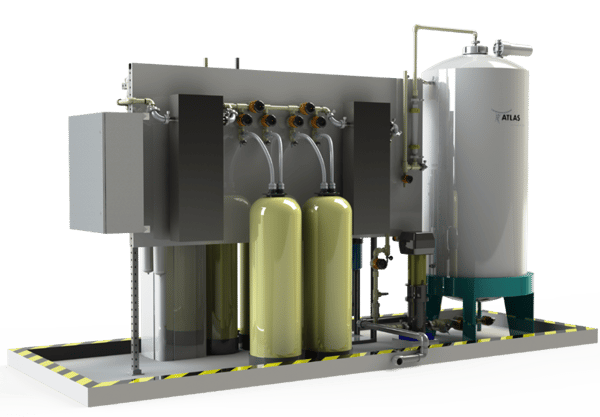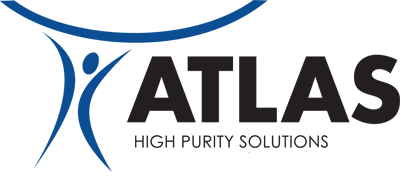The process of designing an ultrapure water system begins by addressing these 5 critical questions
1) What are the characteristics of the incoming water quality?
Understanding feedwater chemistry is the first step to designing any ultrapure water system. That understanding begins with a water analysis. For most ultrapure water systems (also variably referred to as "high purity water systems", "DI water systems", or "RODI water systems"), it’s important to know the composition of total dissolved solids (i.e. the levels of cations and anions in the water). A good analysis will provide the system designer with levels of key contaminants including iron, silica, calcium, magnesium, manganese, chlorides, and total hardness, and many others. The heart of most ultrapure water systems is Reverse Osmosis (RO). Prior to RO, pretreatment technologies must adequately prepare the feedwater for RO. Arriving at a solid understanding of the feedwater chemistry will ensure that the RO will perform optimally over the long term. Additional feedwater conditions should be considered depending on end water quality specifications. These other factors include: dissolved gasses, total organic carbon, silt density index (SDI), chlorine/chloramine levels, and bacteria/endotoxin levels.
2) What is the desired water quality?
We frequently receive system design requests where an end user calls simply for “DI water" or “RO Water.” These requests are rarely sufficient and are typically only adequate for the simplest of applications. When considering the desired water quality, we start with the application. Is the water used to feed laboratory equipment? If so, we will analyze the OEM manuals for equipment like autoclaves, glassware washers, stability chambers, as these manuals typically call for very specific feedwater qualities. Is the water being used for an application that requires ASTM or ISO water quality specifications? Understanding the specific ASTM or ISO specification is vital in ensuring that post-treatment technology and materials are selected accordingly. For applications such as dialysis or, in some instances, central sterile processing, industry standards and regulations determine the water system quality specification. Whatever the application - whether power generation or USP purified water - an ultapure water system designer must take the time to discuss desired water quality with the end user, as the system's pretreatment and post-treatment should be optimized to achieve that specification.
3) How many gallons per day will be consumed?
Believe it or not, this simple question is often overlooked in system design and can result in an over or under-designed system from a capacity perspective. The key metric here is gallons per day of consumption (GPD). In some instances, an ultrapure water system will feed a single application, and it is relatively straightforward to determine quality requirements. In other instances, a system will feed multiple applications or pieces of equipment, and understanding the consumption requirements of each individual application will be instrumental in arriving at that critical GPD consumption figure. It’s also important to understand a few other factors, including hours of operation and expected cycles per day of the application being supplied. Once a GPD figure is determined, the system designer can decide how to size the RO and storage tank to meet the requirements.
4) What flow rate is required?
Most central ultrapure water systems recirculate product water from a storage tank through a loop that feeds various points of use. The flow rate at which that water recirculates is another key consideration in system design. The loop flow rate must be sufficient enough to exceed the flow rate drawn from each point of use and also must recirculate at a velocity that minimizes bacterial growth (we typically target > 3ft/second). This flow rate has implications for storage tank sizing and RO sizing as well. A storage tank that is undersized for a given loop flow rate can lead to excessive turbulence which can cause issues for certain level control technologies. It’s also important to consider the size of the RO relative to a storage tank and flow rate. For example, if a very small RO feeds a very large storage tank, then that can cause service issues if the loop and storage tank require a sanitization to maintain a certain bacteria and/or endotoxin specification. Consider an instance where a 1 GPM RO feeds a 500-gallon storage tank: that would require ~ 500 minutes to completely refill the tank after a sanitization, which could cause excessive service delays.
5) What is the available space?
An ultrapure water system must be housed in a serviceable location. Many systems providers offer standardized, skid-mounted systems that are unlikely to fit into a 5th floor utilities closet or a basement corner with only service elevator access. As a result, it’s important to select a vendor that can meet your special requirements.
Atlas High Purity Solutions fabricates modular systems that can be deconstructed and reassembled to fit into most available spaces. We create 3D models in SolidWorks to ensure that systems fit precisely into the locations selected by our customers.

__
Atlas High Purity Solutions has been designing, installing, and servicing ultrapure water systems for more than thirty years, and is the leading provider of reverse osmosis and DI water solutions in the northeast United States.



